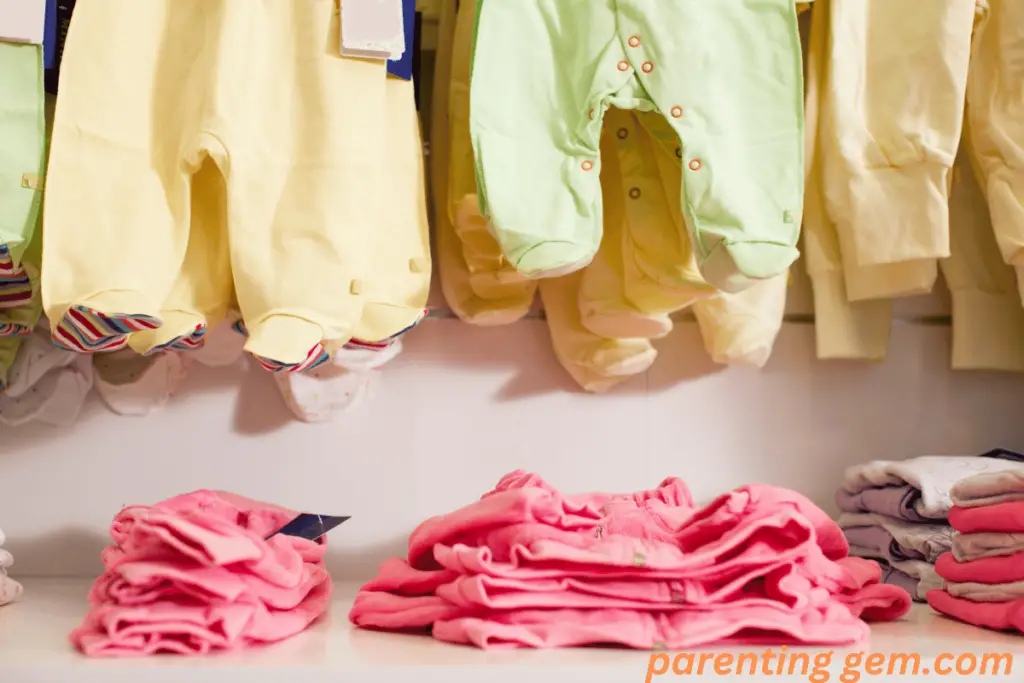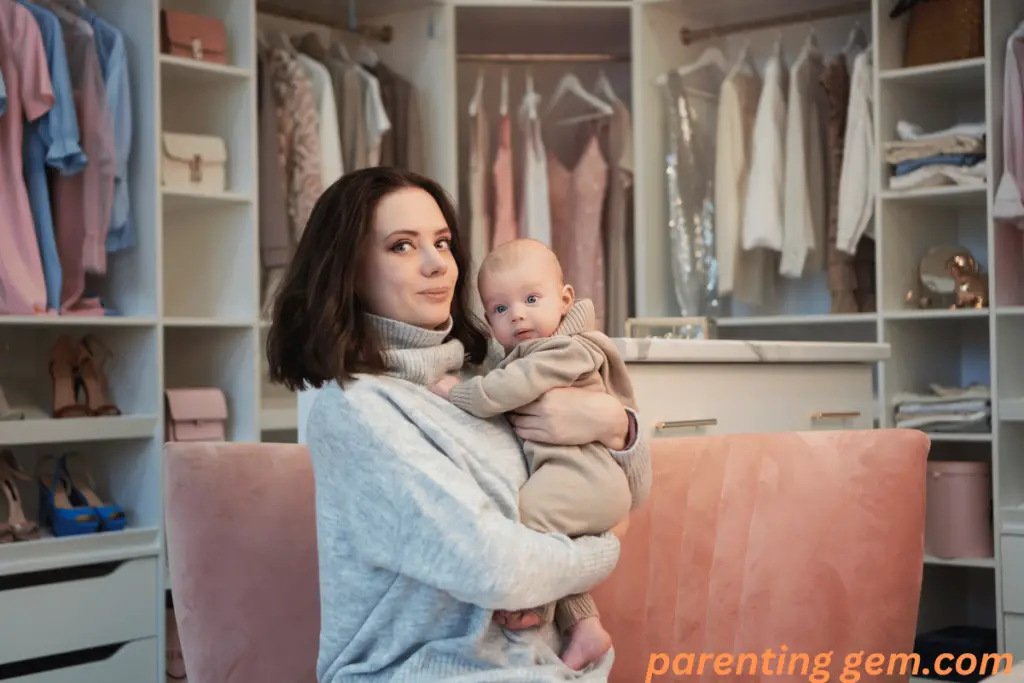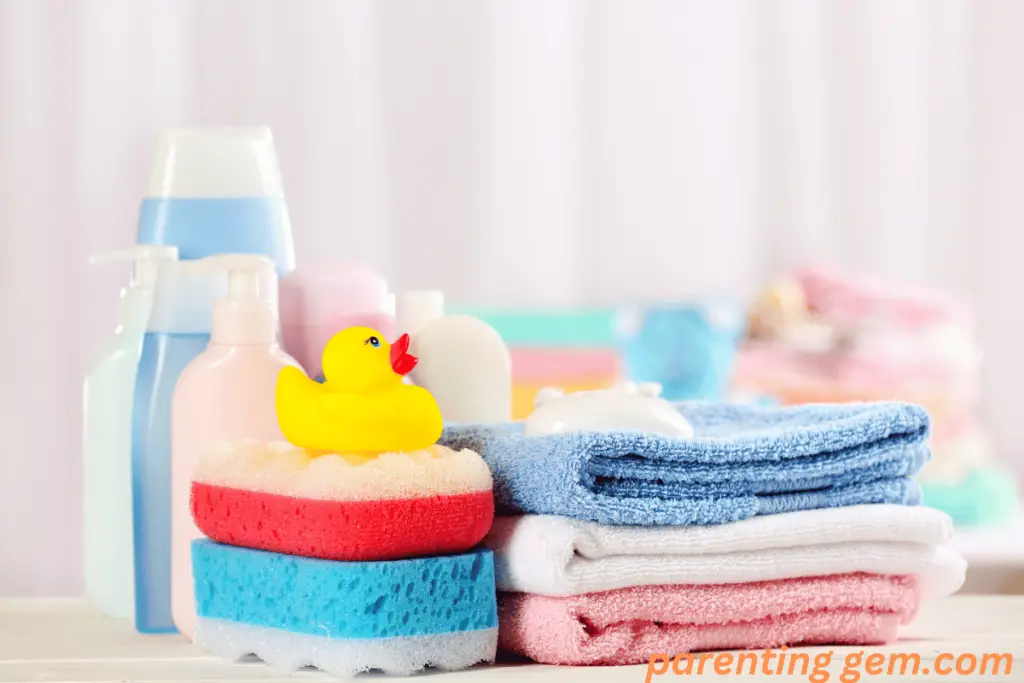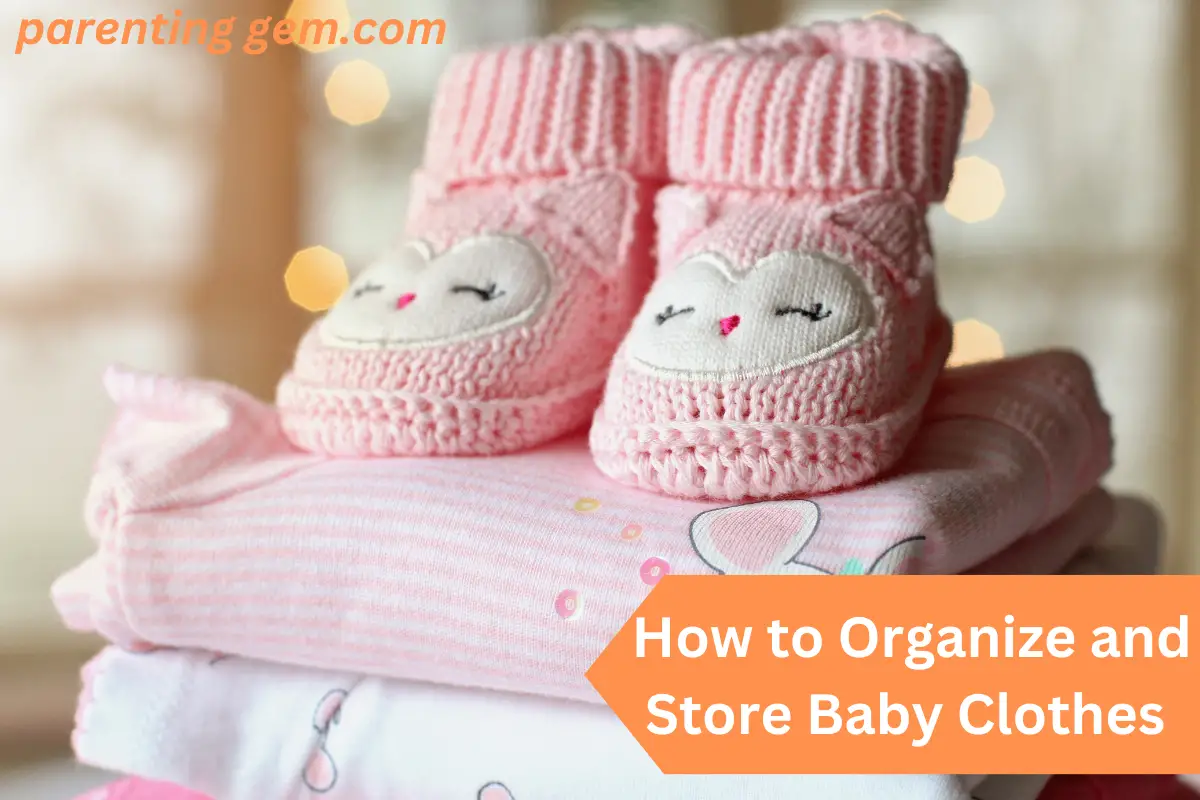Are you a new parent trying to figure out how to store all your baby’s clothes? Or you’ve been parenting for longer and feel overwhelmed by the ever-growing pile of clothing that never seems to stop growing.
Whether you’re an experienced mom or a newbie, organizing and storing your baby’s clothes can be intimidating. But don’t worry! We know it can feel like an overwhelming task, but with some thoughtful organization tips and space-saving tricks, we’ll help make managing their wardrobe less stressful. In this blog post, we’ll guide you through the best ways to organize and store your baby’s clothes in a way that works for your family!
Sort your baby’s clothes by size and season.
First, let’s tackle sorting your baby’s clothes by size. This is a fundamental step in organizing and storing baby clothes efficiently. Start by separating outfits according to your baby’s age: newborn, 0-3 months, 3-6 months, and so on. Remember that sizing can differentiate between brands, so always check the label.
Once you’ve sorted by size, it’s time to divide clothes by season. Grouping winter and summer clothes in another pile makes finding the right outfit for the current weather easier. This way, you’re not sifting through snowsuits in the middle of summer or hunting for a swimsuit during winter.
Staying organized with your baby’s clothes can help reduce clutter, make your life easier, and keep your baby comfortable throughout the year. This is not only a practical solution but also a great way to ensure nothing gets overlooked or outgrown before it’s even worn.
Divide the clothes into categories.

When organizing your baby’s clothing, dividing them into categories such as tops, bottoms, sleepwear, and more can significantly streamline the process. Begin by designating separate spaces for each category in your storage area. Dedicate one drawer or shelf for tops, another for bottoms, and additional spaces for sleepwear, outerwear, and unique occasion clothing. Label each storage space to make it easy to identify where everything belongs.
This method helps you locate items quickly and provides a clear overview of what you have and what you might need more of. For instance, if you notice that the section for tops is overflowing, but the bottoms section appears sparse, it might be time to balance out your baby’s wardrobe.
When shopping for additional items, consider opting for organic baby clothing brands. Organic clothes are often gentler on your baby’s skin and are produced with more eco-conscious methods. Check out this list of the top 5 organic baby clothing brands to give you an idea of where to start.
By categorizing your baby’s clothes, you can keep track of everything more quickly, making it more straightforward to manage your baby’s wardrobe and ensuring everything is noticed.
Buy plastic storage bins that can be labeled and stacked on each other for easy access.
Plastic storage bins are an excellent, space-saving solution for storing your baby’s clothes, especially items not currently in use. Consider purchasing clear bins to see the contents at a glance. These bins are lightweight, durable, and easy to clean. Plus, they can be stacked on top of each other, maximizing your vertical space and making it a breeze to access your desired clothes.
To further simplify your organization system, add labels to each bin. This could be as simple as “0-3 months winter” or as detailed as “12-18 months summer tops”. This helps you quickly identify the contents, saving time when dressing your little one or rotating their wardrobe with the changing seasons.
Remember, it’s essential to store clean clothes only to maintain their quality and prevent any unpleasant odors or potential staining. For maximum longevity, fold clothes neatly before storing them. This not only prevents wrinkles but also maximizes space within the bin.
Additionally, consider including a few silica gel packs in each bin. These small packets absorb moisture, preventing mildew or any unpleasant smells. This is particularly useful for clothes stored in humid climates or damp seasons.
This storage method can be utilized for clothes and keeping track of baby accessories such as hats, socks, and bibs. Investing in plastic storage bins and a sound labeling system can create a highly efficient, manageable system for your baby’s clothes, reducing clutter and stress in your daily life.
Designate a Specific Space for Storing Baby Clothes

Allocating a particular spot in your home for storing baby clothes is vital to maintaining an organized, clutter-free environment. This space may vary based on your home layout and personal preference. Here are some suggestions that cater to different spatial requirements:
- Closet: If you have an extra closet, dedicate this space to your baby’s clothes. Install adjustable shelving units to accommodate varying sizes of storage bins and clothing items.
- Dresser: A dresser can be a practical storage area with separate drawers for different clothing categories. Remember, placing labels on each drawer improves accessibility and organization.
- Under-the-Bed Storage: For homes with limited space, under-the-bed storage is an excellent option. Invest in flat storage bins that easily slide under your bed.
- Wall Shelves: Wall-mounted shelves add a decorative element to your space while providing additional storage. Ensure these shelves are securely installed to avoid any safety issues.
- Baby’s Room Corner: Create a dedicated corner with stacked labeled bins or a small wardrobe.
Remember, whichever space you choose, it should be dry, clean, and away from direct sunlight to ensure the longevity of baby clothes.
By designating a specific area for storing baby clothes, you will keep your baby’s wardrobe tidy and systematic and make it easier to find the right outfit at the right time. This practice also helps declutter your living space, making it more enjoyable and less stressful.
Hang items like dresses or onesies in your closet to free up storage elsewhere.
Hanging certain clothing items, such as dresses or onesies, is an efficient way to save and maximize storage space in your home. If you have a closet, dedicate a section to your baby’s hanging clothes. You can neatly arrange each item according to size, type, or even color using baby-size hangers, which are perfect for tiny clothes. Hanging these items helps keep them wrinkle-free and gives you a clear visual of what’s available, making it easier to choose outfits. It’s also a great way to display those adorable dresses or cute onesies that you love. Furthermore, by hanging these items, you free up drawer or bin space for other clothing categories. It’s a win-win situation where your baby’s clothes are organized, your home is clutter-free, and dressing up your little one becomes fun and stress-free.
Remember, choose high-quality hangers that won’t leave any marks or damage your baby’s clothes. You can even use felt or velvet hangers for added grip and protection. Avoid using wire hangers, which may be too harsh on delicate fabrics and can cause stretching or snagging.
Set aside a box or bin for special baby items.

Setting aside a dedicated bin or box for special baby items is an excellent way to preserve these treasures. This can include various things such as cherished blankets, keepsake mementos, precious toys, and more. Consider these tips for safe and secure storage:
- Choose the Right Container: Opt for a sturdy, acid-free storage box that can protect your items from dust and damage. The Acid-Free Storage Box from the Container Store is a good option as it is designed to resist acid, lignin, and atmospheric pollutants, ensuring the contents’ longevity.
- Clean Before Storing: Clean each item before storing it to avoid damaging materials over time. Here is a helpful guide from Martha Stewart on how to clean and care for baby items.
- Wrap for Extra Protection: Wrap delicate items in acid-free tissue paper to provide an additional layer of protection.
- Organize Effectively: Sort items in the box by category. For example, store all blankets, toys, and so forth. This will make locating items much more accessible later.
- Label Each Box: Clearly label each storage box or bin so you know what’s inside at a glance.
- Store in a Safe Place: Choose a cool, dry, dark place for storage. Extreme temperatures and moisture can damage items over time.
By following these steps, you can ensure that your precious baby items are kept safe and secure, ready to be accessed whenever needed.
Ensure all clothing is washed before storing it to prevent mold growth or mildew buildup.
Maintaining the cleanliness of baby clothes is critical before packing them away for storage. One essential step in this process is to wash baby clothes thoroughly. Washing is necessary for general hygiene and a crucial preventative measure against mold growth and mildew buildup. Unwashed clothes can retain sweat, oils, or food particles, which are a breeding ground for mold and mildew.
Start by sorting the clothes according to their colors and fabric type – this ensures they maintain their quality and color after being washed. Use a mild, baby-friendly laundry detergent to minimize potential irritation or allergic reactions when your baby wears the clothes next time. Make sure you rinse the clothes thoroughly to remove all detergent residues.
After washing, dry the clothes completely. Any residual moisture can also lead to mold and mildew. Therefore, air-dry the clothes in a well-ventilated area away from direct sunlight. However, if you use a dryer, use a gentle cycle setting suitable for delicate baby clothes.
Finally, before packing the clothes for storage, perform a final check. Ensure the clothes are completely dry and free from any stains or soiling. Store them in a clean, dry container, and remember to place a label indicating the size and type of clothes. This meticulous process of washing, drying, and storing helps maintain hygiene and extends the life and quality of baby clothes. So, make sure to follow this practice whenever storing baby clothes.
Regularly Purge and Donate Clothes Your Baby Has Outgrown
As babies grow astonishingly, it’s essential to regularly go through their clothes and remove items that no longer fit. Purging or decluttering your baby’s wardrobe is a practical way to make space for new clothes and an excellent opportunity to donate gently used clothing to those in need. It’s also a wonderful habit to instill in your child from a young age, teaching them the value of giving and helping others.
When going through your baby’s clothes, consider separating items into three categories: keep, donate, and throw away. Keep items that still fit or can be used for younger siblings. Donate any clothing in good condition to local charities or organizations supporting needy families. Finally, dispose of any damaged or stained clothing responsibly. This process helps keep your baby’s wardrobe organized and contributes to reducing waste and supporting local communities.
Conclusion
Storing and organizing baby clothes can be a daunting task. However, it can become much more straightforward and manageable with the right tips and tricks. Our guide on collecting and storing baby clothes has helped you navigate this process.
Starting early with organizing will make it easier as your child grows. Investing in storage bins for sorting, labeling items by season and size, setting aside a special section for keepsakes, and hanging items where possible are all great methods to stay organized.
Remember to always wash clothing before storing them away to prevent any mold or mildew buildup. Ultimately, creating an organized system that works for you is vital – try different methods until you find what works best!
Have any further questions? Please comment below and tell us your thoughts – we’d love to hear from you!


